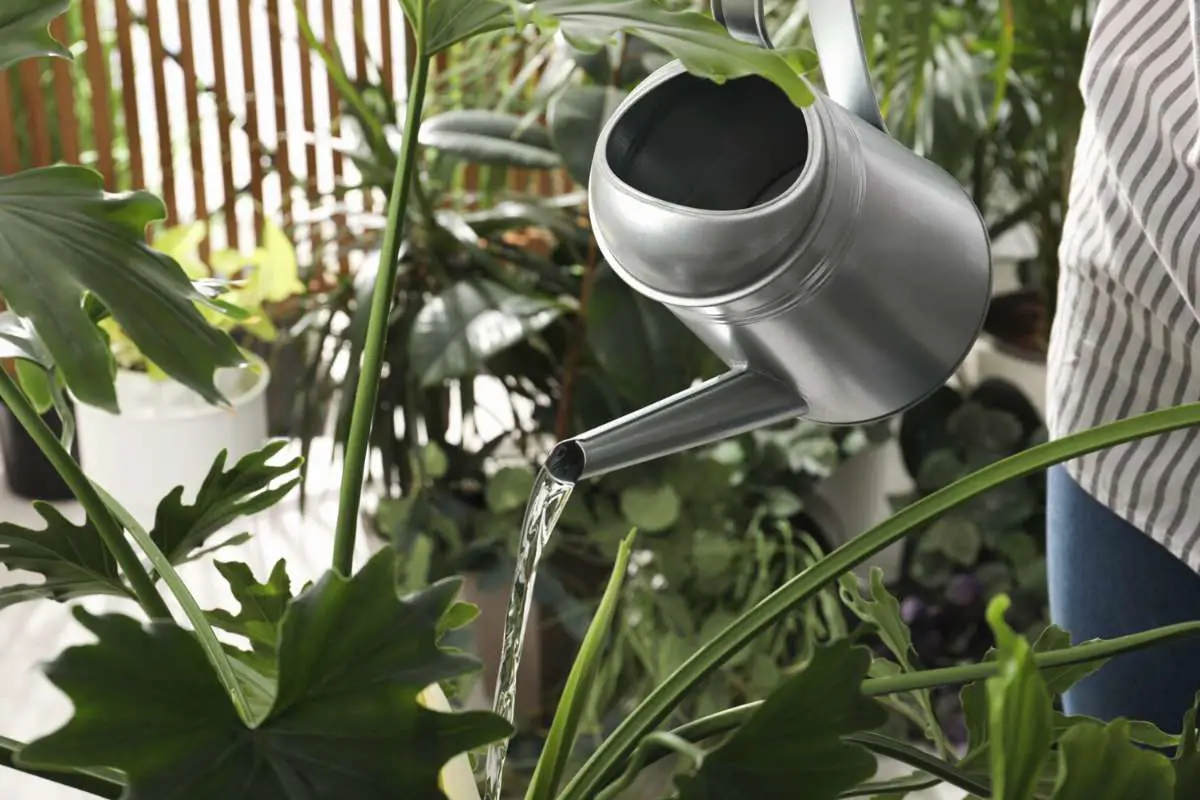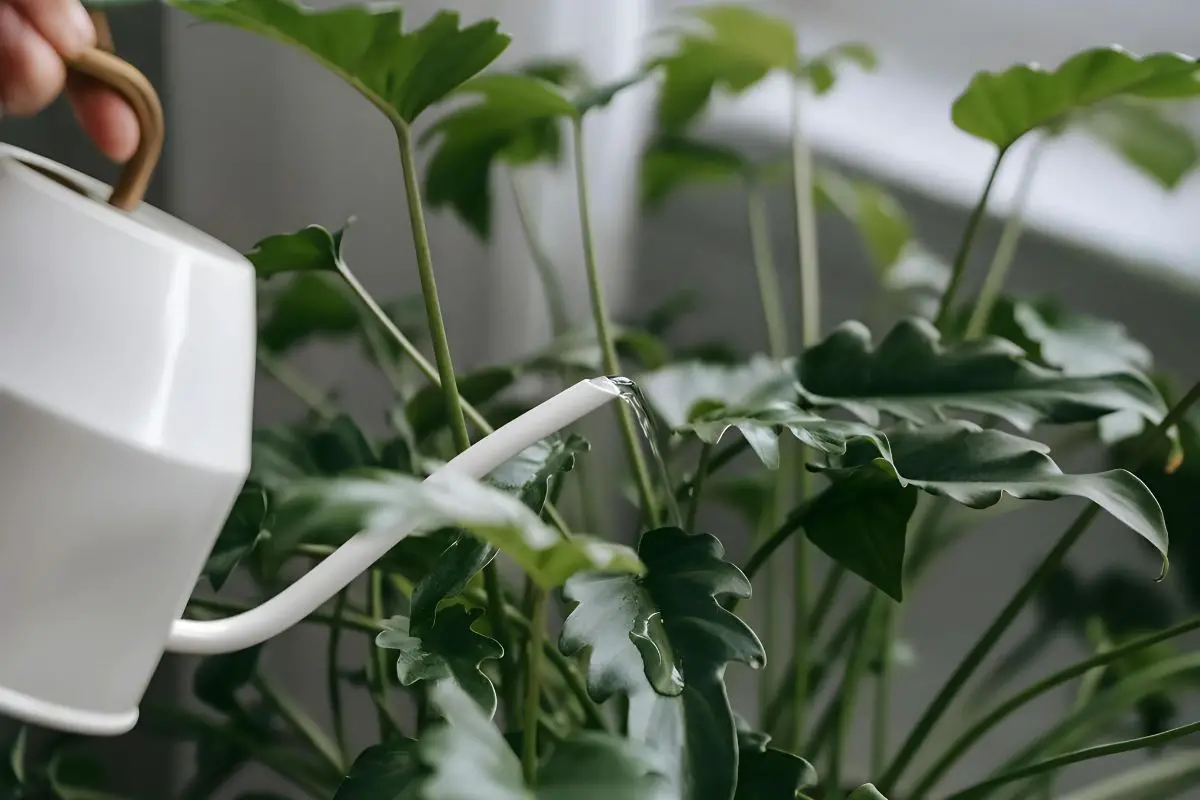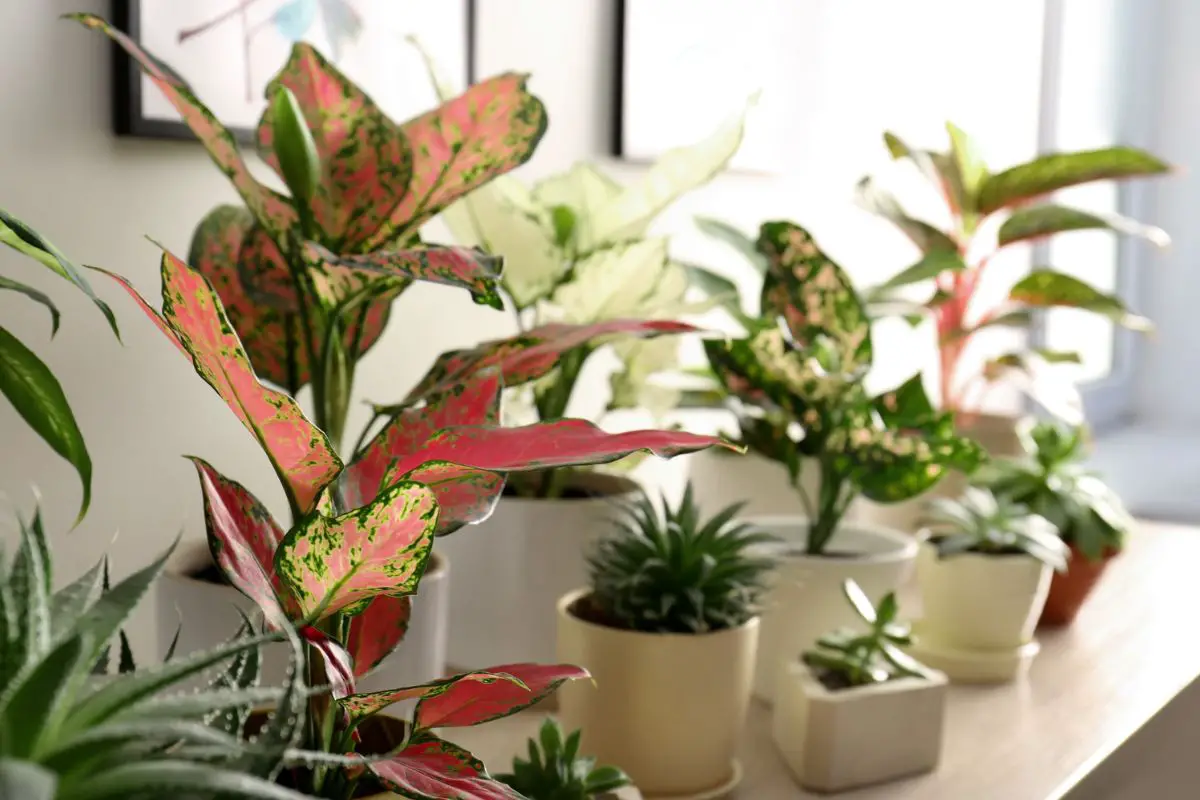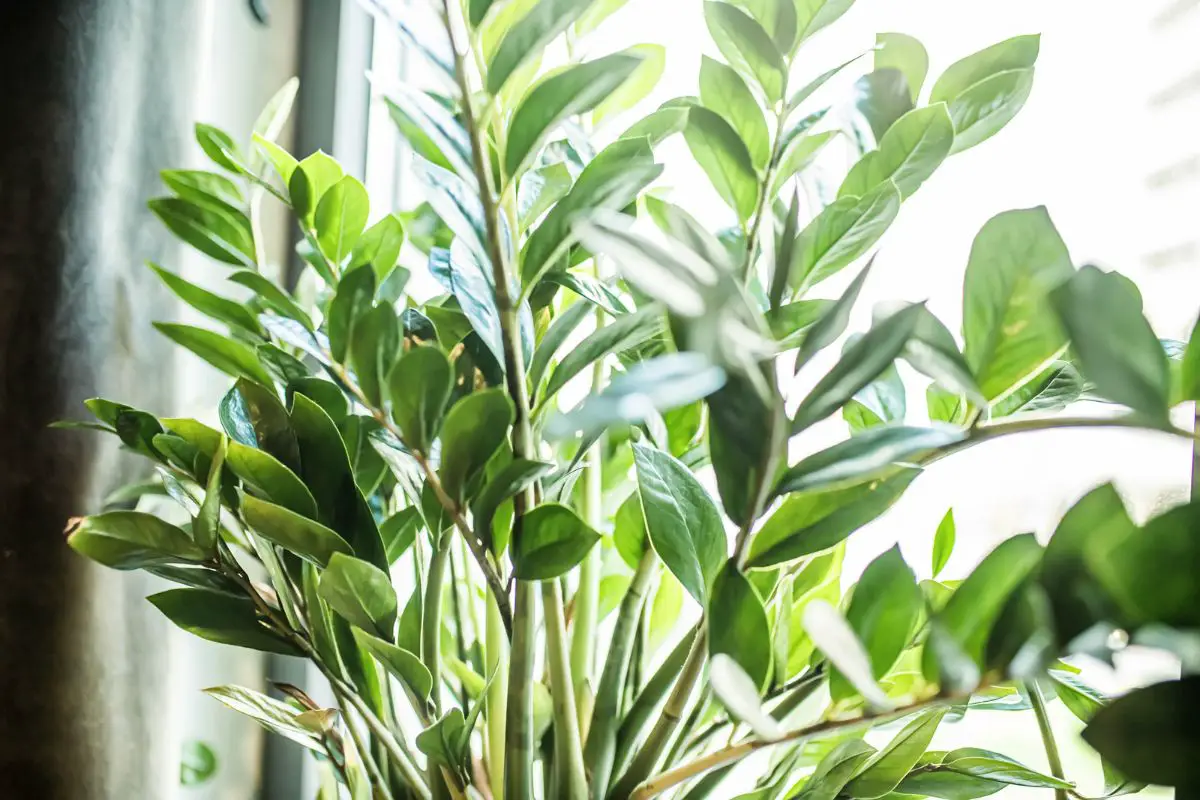Pot size is an essential plant care consideration that’s often taken for granted. Repotting can be a tedious process that causes stress to plants, so inexperienced gardeners may try to avoid it by overestimating the pot size. However, overpotting can negatively affect plant health.
Overpotting a plant in soil with poor drainage will lead to overwatering issues. The excess soil will hold more moisture than the roots can take and keep them wet for longer. The stressed plant will then be more susceptible to root rot, which can eventually kill it.
In the rest of the article, I’ll explain in more detail how overpotting can affect your plant. I’ll also share practical tips on how to choose the appropriate pot size and safely move your plant into a bigger container.

Pot Size and Plant Health: An Overview
Potted plants generally need more frequent attention than plants grown in the ground. The limited soil space and nutrient availability in the pot means the plant needs more frequent watering and fertilizing.
The plant will also need to be transferred to a larger pot regularly, depending on its growth rate. After a few years in a pot, the plant’s roots will become rootbound or potbound. This happens when the root system becomes so extensive that it displaces the soil.
Without enough soil to hold moisture, the water will be lost through the drainage holes before the roots can absorb it.
It’s only natural to move your plant to a larger pot to fix this issue. Repotting will give your plant larger space to accommodate root growth and replenish the soil nutrients or organic matter.
Many studies show that there’s a direct relationship between pot/soil volume and plant growth. The higher the soil volume, the larger the plant will grow. This applies if the soil quality (drainage and moisture retention) is appropriate for the plant type.
In most cases, placing your plant in an excessively larger container with a large volume of moisture-retaining soil can present a bigger problem.
Let’s go into more detail in the following section.
Risks of Overpotting
Simply put, overpotting is using a pot that’s too large for your plant’s roots. Note that overpotting isn’t always detrimental to your plant. One way your plant can survive a too-large container is if it has fast-draining soil.
The negative effects of overpotting largely depend on the following factors:
- Heavy use of moisture-retaining substrate: Compost, peat moss, coco peat, and vermiculite can hold much moisture and keep the soil wet for extended periods.
- Poor drainage: Plastic containers, pots without drainage holes, and slow-draining soil all increase the risks associated with overpotting.
- Plant type and growth rate: Drought-resistant plants, like cacti and succulents, and slow-growing plants are more sensitive to overwatering issues linked to overpotting in inadequate soil.
- Timing of repotting: Plants repotted outside their active growing season will naturally have less metabolic activities and require less water. Overpotting them in moisture-retaining soil can increase the chances of wilting or root rot.
Considering the factors listed above, here are the risks of overpotting your houseplants:
Root Rot
Root rot is probably the worst that can happen to overpotted plants. The excess moisture in the soil will keep your plant roots sitting in wet soil for too long and block air spaces. The lack of oxygen will make the roots weak.
Low temperatures and high humidity can exacerbate the problem because your plant will transpire less under these conditions. The water will also evaporate more slowly from the soil.
The excess moisture will also promote rapid fungal growth in the soil. Root-rot-causing fungi can then attack the weakened roots and kill your plant in just a few days or weeks if left untreated.

Nutrient Imbalances
You can sometimes get away with overpotting if the soil has excellent drainage.
The problem with this case, however, is that the nutrients from granular or liquid fertilizers can spread in areas of the soil that are inaccessible to the roots. These nutrients will then leach through the drainage holes every time you water your plant.
So even if you fertilize your plant adequately, much of this fertilizer will be lost if the pot is too big.
Stunted Growth
As mentioned, overpotting can lead to overwatering issues and root rot. To prevent these issues, the usual initial solution is to reduce watering frequency instead of repotting in a smaller pot.
However, this doesn’t always fix the problem.
The moisture may remain in the soil beyond the reach of the roots. The plant’s response to lack of water would be to grow its roots deeper and wider to reach the moisture. This effort will lead to more root growth and less shoot growth.
Therefore, you will notice a significantly slower growth in your plants even when you’ve repotted them during the growing season.
Signs of Stress in Overpotted Plants
You’ll know that your plant is suffering from overpotting if you see the following signs:
- Yellowing leaves: This symptom usually indicates overwatering or underwatering. You can confirm overwatering if the soil remains wet about 5-7 days after watering.
- Waterlogged soil: Soil that contains plenty of moisture-holding materials can remain wet for too long if the plant doesn’t have enough roots or shoots to absorb water.
- Slow growth: Repotting your plant early in the growing season should result in noticeable growth within the next few weeks. If you don’t see new leaf growth or an increase in height within a month, it could be that your plant is putting more energy into root growth.
Choosing the Right Pot Size
A large pot translates to a large soil volume to plant matter ratio. There isn’t enough research that explains the appropriate ratio. The large number of plants and the wide variety of potting mix recipes make it challenging to give clear numbers.
However, there are a few gardening practices that are proven to help prevent the issues associated with overpotting:
Most Plants Prefer a Pot That’s One Size Bigger
The most common practice is to pot up your plant using a container that’s only one size bigger than the old one.
For instance, if the old pot was 6 inches (15 cm) in diameter, the new pot should be 1-2 inches (2.5-5 cm) wider. Meanwhile, the depth can vary depending on the size of the rootball.
You usually have to water the plant when the upper 2 inches (5 cm) of the soil is dry. Therefore, a good rule of thumb is to leave about 2-3 inches (5-7.6 cm) of soil space below the rootball to prevent the roots from sitting in the constantly wet layer.
Fast-Growing Plants Can Use Bigger Pots
There are a few houseplants that don’t mind overpotting. The list below is not comprehensive but will give you an insight into what qualities make plants more tolerant to overpotting.
Spider Plant
Fast-growing plants like spider plants can quickly outgrow their pots. You can repot them in containers about 2-4 inches (5-10 cm) larger than the older ones.
These plants can tolerate larger pots because they have rhizomes that efficiently absorb and retain moisture, making them relatively drought-tolerant. You can let the soil dry out a bit more between watering to prevent issues with overwatering or root rot.
Monstera
Monstera are fast-growing plants usually grown on moss poles. Mature plants don’t mind larger pots because you don’t need to water the soil frequently. They get most of the moisture from the moss pole or the air.
The large pot is also necessary to support the plant’s weight, which can get top-heavy as the leaves grow bigger.
However, monsteras grown in pots without a moss pole will depend on the soil for moisture, especially if your home has low humidity. Overpotting them in this case can lead to watering problems and nutrient imbalance.
Snake Plant
Snake plants also have rhizomes and can tolerate overpotting. They can grow quickly when kept in bright areas and may require repotting every 1-2 years if planted in a pot that’s only one size bigger.
Because of this, I tried repotting mine in a pot 4 inches (10 cm) larger than the old one. I grow my snake plant in fast-draining soil (2 parts standard potting soil, 1 part perlite, and 1 part coarse sand), so there’s little risk of overwatering.
After keeping it at appropriate soil and environmental conditions, I was able to extend the repotting interval to 5 years.
Plants Can Tolerate Overpotting if There’s Good Drainage
The main problem with overpotting is the excess moisture that remains in the soil.
You can minimize or avoid overwatering issues by improving drainage through the following:
- Fast-draining soil: Potting mixes rich in perlite, pumice, or coarse sand can drain water freely, preventing your plant from sitting in constantly wet soil.
- Pots with drainage holes: Drainage holes are crucial to protect your houseplants from health problems associated with overwatering.
- Breathable pots: Unglazed terracotta or clay pots can wick moisture away from the soil and plant roots more quickly than plastic or glazed pots.
A plant’s metabolic activity, warm temperatures, and low humidity can also speed up water loss from the soil. That said, overpotting can sometimes be acceptable when done early in the spring during a plant’s vigorous growth (except for naturally slow-growing plants).
Other Considerations
There are times when you don’t have to pot up the plant when repotting.
Here are some examples:
Treating Root Rot
When repotting a plant after treating root rot, you must consider how much of the roots you have removed. Depending on the extent of the damage and pruning, you may even need a smaller pot.
Choose a pot that’s about 1-2 inches (2.5-5 cm) wider and 2 inches (5 cm) deeper than the rootball to avoid overwatering issues that can lead to root rot again. It’s also important to use a fresh, well-draining potting mix for faster recovery.
Dividing Overgrown Plants
Plants with bulb roots or those that grow offsets or pups are best divided once they outgrow the pots. Each division can be planted in a separate and smaller pot.
You must refer to the size of each division’s rootball when choosing the pot size. You can hardly go wrong with choosing a pot that’s only 1-2 inches (2.5-5 cm) wider.
Note that young plants will naturally need more frequent repotting (every year) than mature plants.
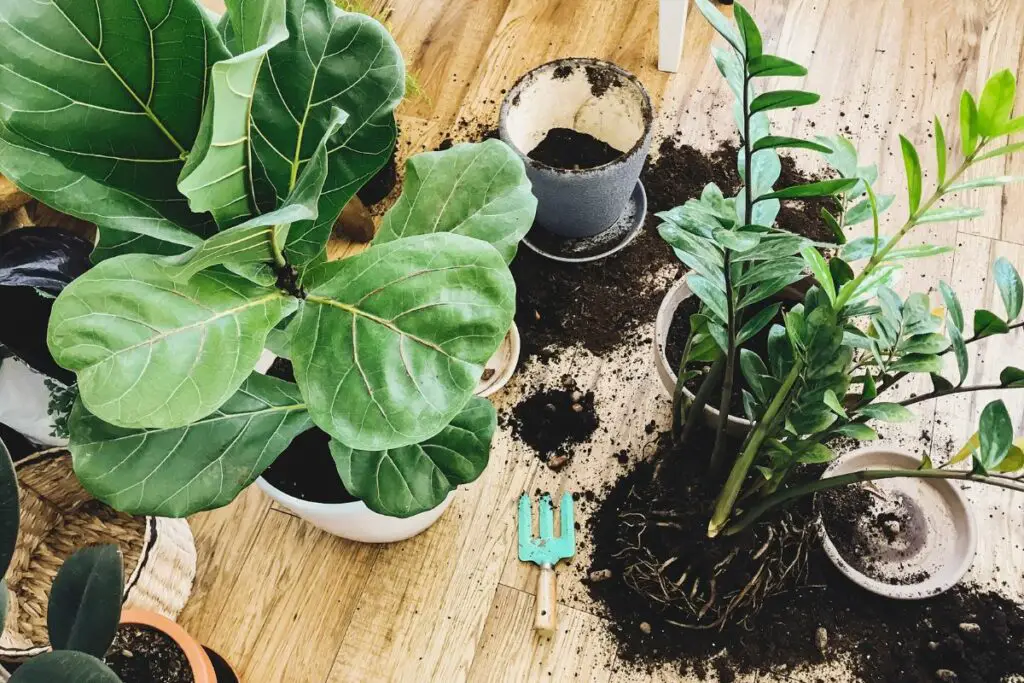
Pot Size: Myths and Misconceptions
Despite the negative impacts discussed above, many gardeners still overpot their plants. It can be due to widely circulating myths and misconceptions, which I’ll explain (and disprove) below.
Putting Gravel or Rocks in Planters
You may have come across suggestions about placing sand, gravel, rocks, or styrofoam in the bottom of your planter to reduce the soil space or improve drainage.
Unfortunately, this practice is harmful to your plant.
The bottom layer of the soil remains almost always wet (unless you let your soil become bone-dry). Gravity will pull the water down, but the plant’s transpiration leads to a capillary force that pulls the water up.
The balance will keep some water at the bottom of the pot and keep it from draining out entirely. This wet layer is called the perched water table and is usually beyond the reach of the roots of newly repotted plants.
If the bottom of the pot is filled with materials that have a drastically different particle size compared to the potting mix, the water will move sideways and sit on top of the coarse layer. This will move the perched water table closer to the root zone, increasing the risk of root rot.
I’ve illustrated this effect in the below graphic:

Large Pot, Less Frequent Watering
Large pots can hold more soil and more soil means less frequent watering. This is actually true. However, it’s not good for your plant. As discussed, the excess moisture will keep the roots wet for too long.
Also, if you have fast-draining soil, most of the water will go beyond the reach of your roots sooner, leaving your plant thirsty. The roots will then struggle to grow and reach for the remaining water in the soil, resulting in slower shoot growth.
How to Repot into a Larger Pot Safely
Houseplants need to be repotted regularly. On average, most houseplants require repotting every 1-2 years. The frequency can vary depending on your plant type and its growth rate.
The best time to repot your plant is at the beginning of its growing season. This will minimize repotting stress or improve the chances of recovery because the plant is actively growing.
You’ll know it’s time to repot your plant when you see the following signs:
- Roots poking out of the drainage holes
- Roots growing out of the soil surface
- Water escaping through the drainage holes shortly after pouring
- Wilted plants that don’t perk up after watering
When you notice these signs, you can repot your plant by following the steps below:
- Loosen the potbound plant by scraping the insides of the pot with a flat knife.
- Slide the plant out of the pot.
- Moisten to disentangle the roots and remove the remaining soil.
- Inspect the roots for damage (brown, rotten, dry, weak tips).
- Prune the damaged root sections using sterile scissors or pruning shears. Don’t prune more than a third of the roots.
- Choose the pot size based on the considerations discussed above.
- Fill the bottom of the pot with 2 inches (5 cm) of fresh and moist potting mix.
- Spread the roots over the soil and cover it with more soil until the surface and the plant’s crown are just ½-1 inch (1.3-2.5 cm) below the rim of the pot.
- Water the plant deeply until the excess drains out of the pot’s holes. For succulents and cacti, you don’t have to water right away if the soil is moist. You can wait for the upper half of the potting mix to dry before watering.
Managing an Overpotted Plant
When your plant shows severe signs of stress from overpotting, the best solution is to move it to an appropriately sized container. The plant is already stressed so it’s important to be careful when repotting again so soon.
Here’s how to repot an overpotted plant showing early signs of rot:
- Lightly water the soil around the base of the plant 1-2 days before repotting to make it easier to work with. It will also rehydrate your plant before the repotting process.
- Once the soil is only slightly moist, carefully dig around the root ball using a hand shovel.
- Scoop out the rootball using your hands and loosen the soil from the roots using your fingers.
- Inspect the roots for signs of rot and prune when necessary using sterile shears. Limit pruning to 30% of the roots.
- Wash the roots with tepid and gentle running water to remove the remaining soil.
- Let the roots dry a bit over a clean towel.
- Prepare the correct pot (1-2 inches or 2.5-5 cm wider than the rootball) and fill the bottom with 2 inches (5 cm) of fresh and moist potting mix.
- Carefully spread the rootball over the soil and fill in the pot with fresh and moist potting mix up to ½-1 inch (1.3-2.5 cm) below the rim.
- Lightly tamp the soil down to remove excess air pockets. Avoid pressing so hard that the soil becomes compacted.
- Wait a few days for the upper inch (2.5 cm) of the potting mix to dry before watering your plant deeply.
Overpotted plants grown in fast-draining soil don’t usually need a second repotting. This will help minimize the negative impact on your plant’s health from frequent repotting.
If your plant doesn’t show signs of root rot but exhibits stunted growth, you can manage it in the following ways:
- Water the plant sparingly by pouring the water near the base of the plant where the roots are.
- When it’s time to fertilize your plant, use foliar fertilizers instead of granular or liquid fertilizers. This ensures your plant will absorb the nutrients instead of losing them from leaching.
- Improve air circulation by switching on the fan in the room to remove excess moisture from the soil.
- Keep your plant slightly close to the upper limit of its preferred temperature, especially during the cold season when the plant is not actively growing.
Final Thoughts
Overpotting your plant can do more harm than good. The soil can remain wet for extended periods, putting your plant at a higher risk for root rot. It can also lead to stunted growth and nutrient imbalance.
These negative effects can be exacerbated if you use moisture-retaining soil, have a pot with poor drainage, plant drought-resistant, slow-growing plants, or repot the plant outside of the growing season.
Evaluate your plant’s growth behavior, root type, and soil requirements before repotting so you can select the appropriate pot size.
We’d love to hear about your learning experience with overpotting your plant so please leave a comment!


